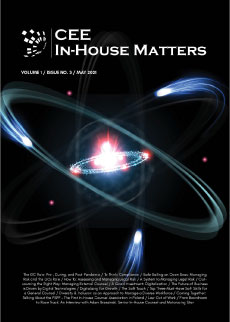On February 3, CEE Legal Matters reported that Walless had advised the Ignalina Nuclear Power Plant on a project tender for reactor dismantling technology design services. CEE In-House Matters spoke with INPP CEO, Audrius Kamienas to learn more about the matter.
CEEIHM: Let's start with the history of the Ignalina Nuclear Power Plant.
Kamienas: The Ignalina Nuclear Power Plant is a decommissioned nuclear power plant located in the town of Visaginas in northeastern Lithuania. The plant had two RBMK-1500 nuclear reactors, which were similar in design to the reactor that was involved in the Chernobyl disaster in Ukraine in 1986.
The first reactor at Ignalina NPP began operating in 1983, and the second reactor followed in 1987. The plant was designed to provide about 70% of Lithuania's electricity needs, and it remained in operation until December 31, 2009, when it was shut down as a condition of Lithuania's entry into the European Union.
The shutdown of the Ignalina Nuclear Power Plant was necessary because of safety concerns related to the RBMK-1500 reactors, which were considered outdated and difficult to maintain. The decommissioning process includes the safe removal and storage of nuclear waste, the dismantling of the reactors and other structures, and the restoration of the site to a safe and environmentally sound condition. The process is being carried out in stages, and it is expected to be completed in the 2040s.
The plant's decommissioning is a complex and lengthy process, which is expected to take several decades and cost approximately EUR 3.5 billion. The decommissioning process is mostly funded by the European Union.
Overall, the Ignalina Nuclear Power Plant is an important part of Lithuania's history, and its decommissioning is a significant undertaking that will require careful management to ensure the safety of the workers involved and the surrounding environment. Our mission today: creating a clean environment through sustainable management of the nuclear legacy.
CEEIHM: As reported by CEELM, Walless recently advised on a project tender for the plant. What is the goal of the tender?
Kamienas: The objective of the tender is the design of services for reactor core dismantling technologies of both RBMK 1500 reactors and for the management of the generated waste. The services will include the preparation of safety and licensing documents and providing support in interactions with stakeholders and regulatory bodies for obtaining permits needed to proceed with the dismantling of the reactor cores.
The design services for the dismantling technologies will be provided in two phases. In Phase 1, a concept for the dismantling of the reactor will be developed through the award of two pre-contracts with contractors. Each of the two contractors will design and propose two engineering solutions. Afterward, the best project will be chosen.
CEEIHM: What was the most complicated aspect of the tender from a legal perspective?
Kamienas: Dismantling of the RBMK-1500 in the way INPP is doing it is a unique and first-of-its-kind project in the whole nuclear energy industry. It was never done before and should take about 15 years to finish. Accordingly, when you are carrying-out unique long-term activities, you face unique risks and threats, many of which are of a legal kind. When conducting tender procedures, INPP was looking forward to attracting key players in the nuclear energy sector, to ensure timely and safe project implementation.
The most complicated aspect of the tender from a legal standpoint was to make the tender attractive from a legal perspective to major companies acting in the given field. Such attractiveness was of several kinds:
- Clear general conditions
- Adequate qualification requirements for Tenderers
- Proper Tender evaluation criteria
- Flexible contract content
- Transparent Tender procedures
CEEIHM: How was the work split on the tender between your in-house team and that of Walless?
Kamienas: Walless assisted INPP from the very beginning of the project starting with the development of the concept of the tender. All work on the tender was carried out together by all parties: INPP, Central project management agency, Walless, and the European Commission. Walless consulted INPP on the tender document conditions, legal aspects of the contract (amendment possibilities, intellectual property, etc.), and conducting the tender.
CEEIHM: And why did you pick this firm, in particular, to assist you in this project?
Kamienas: Walless was selected by tendering procedures at the beginning of the project. As subsequent cooperation with Walless proved to be effective, Walless was chosen to assist on the project untill the end of the tender procedures.


